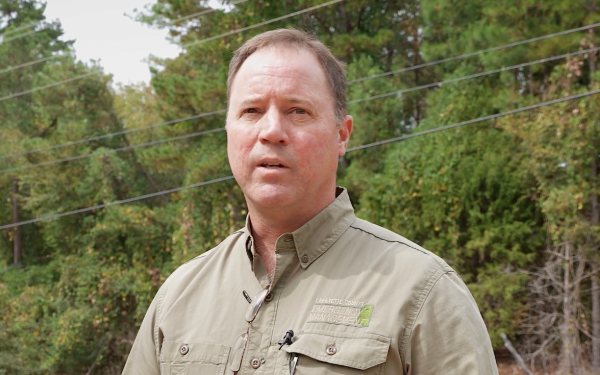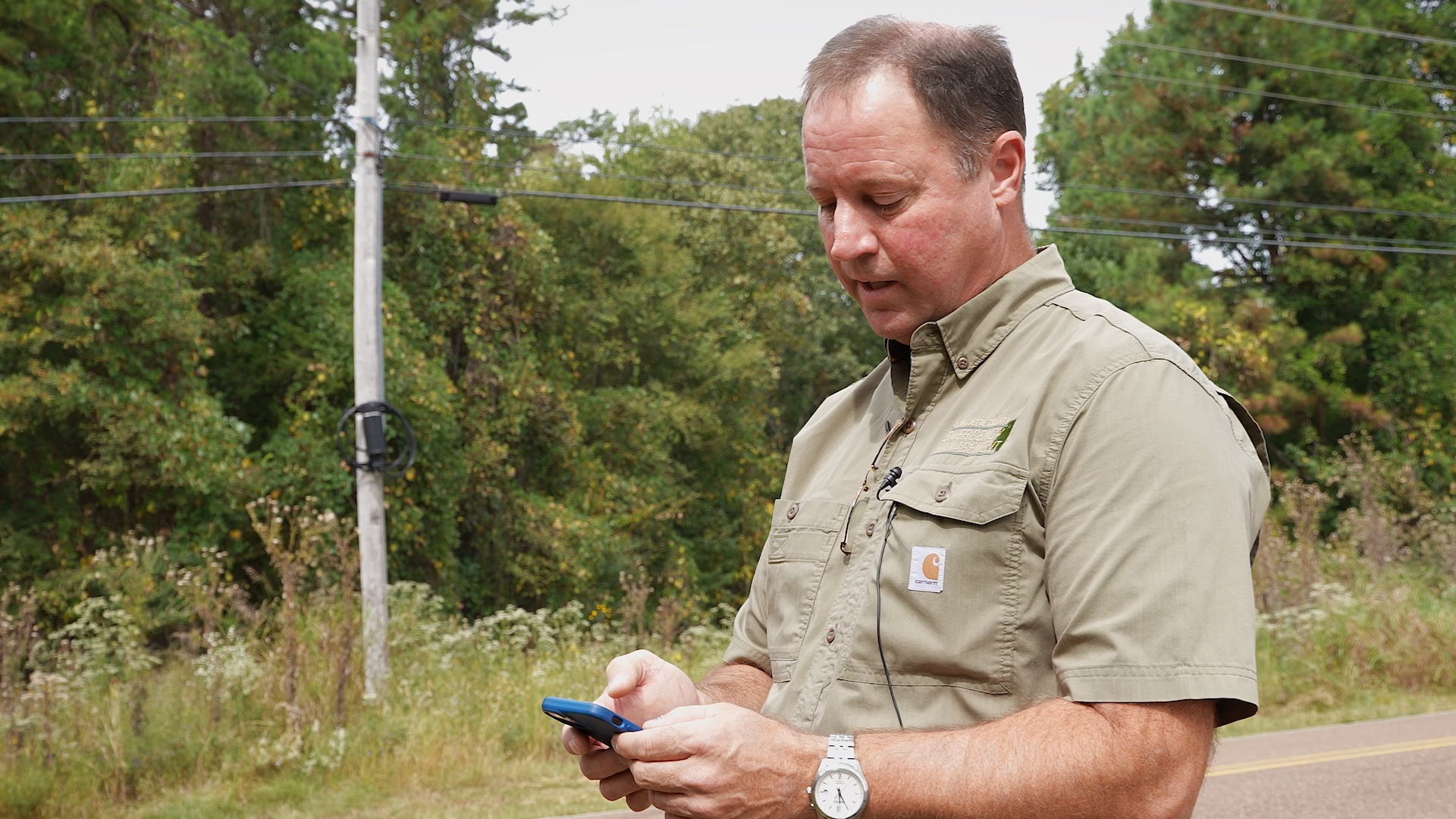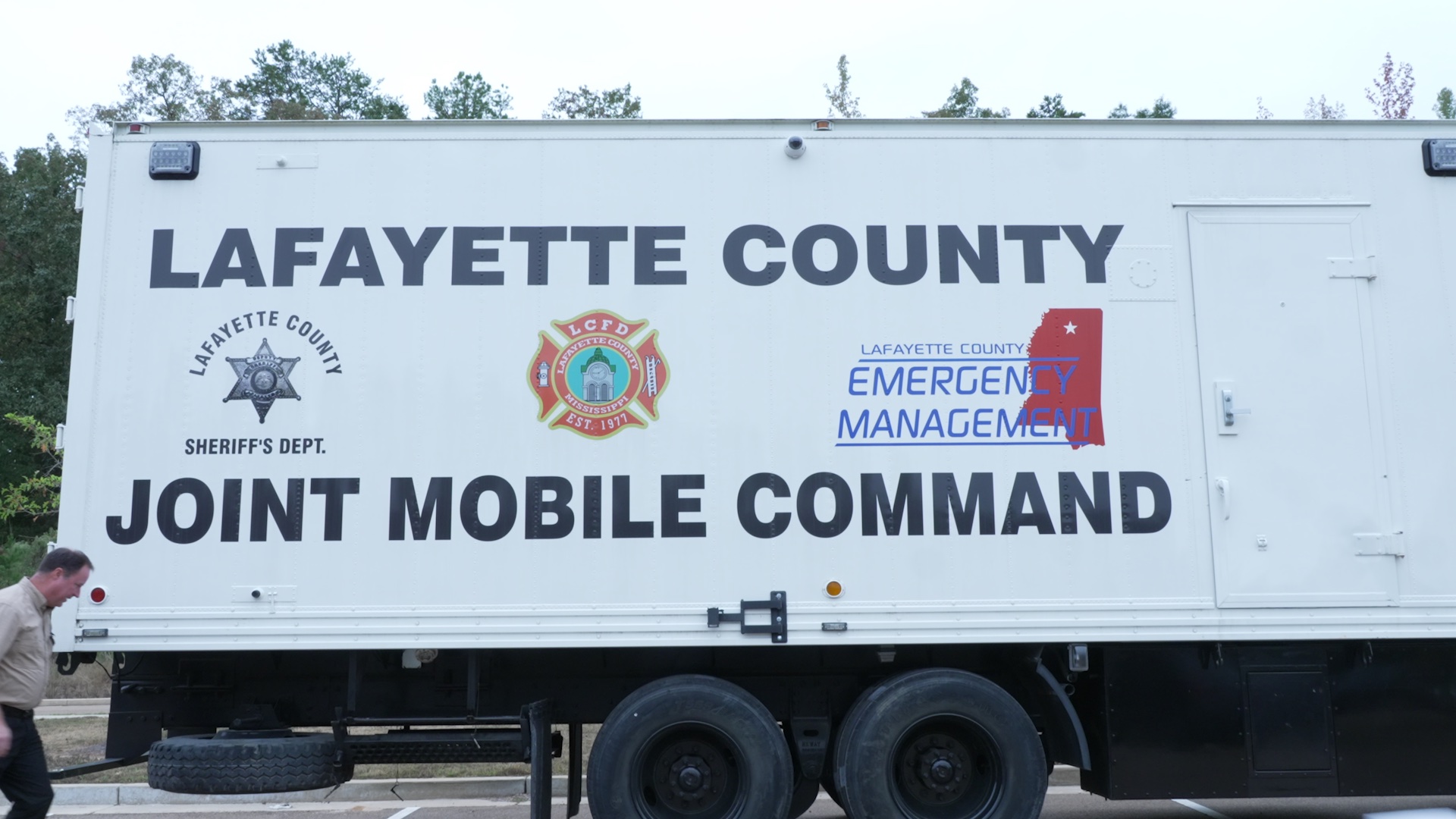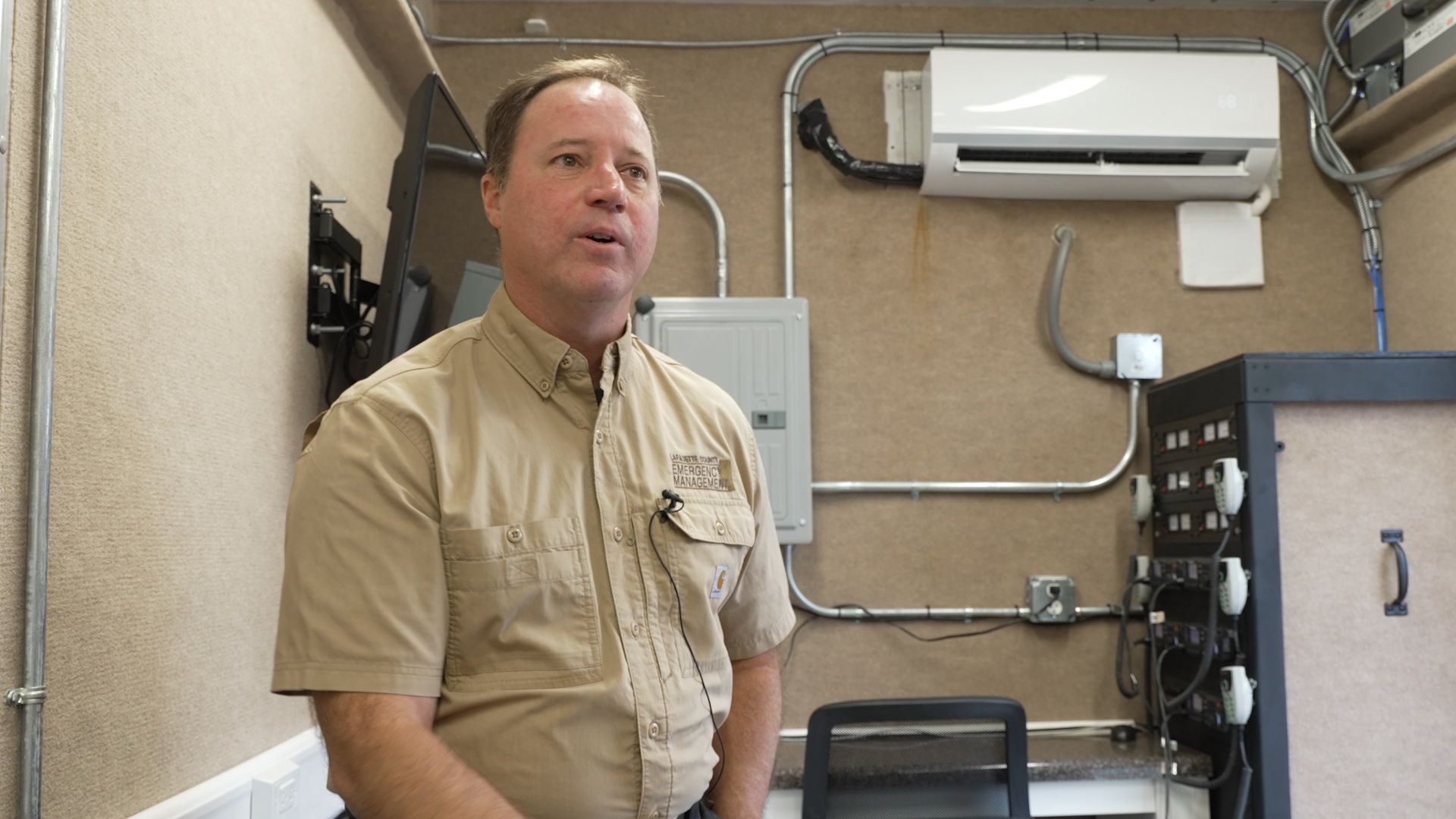County News

“In our role as Emergency Management, we respond to stuff people really wouldn’t think,” says Lafayette County Emergency Management Director Steve Quarles.
“Oftentimes, there’s not a quick, easy answer for the scope of everything that’s involved in Emergency Management because it’s such a wide scope of things, but to put it simply, Emergency Management has four areas that we deal with. There’s mitigation, prevention, response and recovery.”
Most days, the Emergency Management team focuses on prevention and mitigation. One look into Quarles’ office, and you’ll see a bookcase that holds binders and binders of plans for any disaster that might happen.
The team has comprehensive emergency management plans for the county, all of which must be reviewed and updated regularly. “When we’re not busy doing something else, we’re working on rewriting those plans, so they’re current,” Quarles says.
Emergency Management spends the bulk of their time working on grants—a fact that some people might be surprised to learn about—which helps them maintain assets to help the county during a disaster.
The response part, which takes place after a disaster, is generally short-lived for EMA. Emergency responders will arrive to stabilize the situation and coordinate efforts. Recovery, the final stage of emergency management, can take much longer.
“Recovery is the long-range work,” Quarles says. “How do we heal as a community? That’s what we try and do at Emergency Management.”
Preparation, Preparation, Preparation
A statewide radio system plays in the background at the EMA office. “We scan the radio at all times,” says Quarles. “We need to know what’s going on.”
During each day, the four-person team that makes up Emergency Management is hard at work, preparing for anything that could come the county’s way.

As the Lafayette County Public Information Officer, Beau Moore plays a crucial role in keeping the public informed and prepared, disseminating timely information both during times of crisis and in normal circumstances.
“In the hopefully unlikely event of an emergency here in Lafayette County, I help support all the different emergency agencies in the county,” he says, “simulating data to the community about what might be going on, so that everyone is informed from a community aspect, but also the different heads of departments from the supervisors to the Sheriff to the Fire Chief to the Emergency Management Director.”
Throughout the year, EMA will facilitate tabletops—in which teams will meet to discuss emergency preparedness—and full-scale exercises with different county agencies. Last year, EMA coordinated an active shooter exercise with Lafayette County School District, an effort that took several months of preparation.
Throughout the month, EMA is also visiting sites that are used in times of emergency, ensuring they’re able to be useful.
“We have generators in the fire stations and repeater sites, so we try to exercise those to make sure they’re working. We go to the storm shelters and make sure the doors open. Those hinges are old,” Quarles says, laughing.
“You can never be too prepared for when an emergency happens,” Moore says. “Stay prepared by talking to your family about everything from what’s your plan if your house catches on fire to what to do if there was a tornado. Do you have the right resources ready? All that planning, that’s what we do here: planning for things that we hope never happen.”
Severe Weather’s Siren Song
Nearly every Lafayette County resident will know that the county sirens are checked every Wednesday at exactly 11:55 a.m.
“We’re the ones that actually activate the test for that,” Quarles says, pointing to a computer screen behind him, lit up with a map of the county. The test makes sure the sirens are working and don’t require any repair.

EMA operates the county’s 27 sirens, as well as the City of Oxford and the university’s sirens. Though Quarles has several different ways to activate the sirens, he prefers to use the WeatherWarn system on the computer.
“This particular one, when you go to activate the siren, they’ll ask, ‘Do you really want to activate?’ It’s a three-step process. The app on my phone is a one-step.”
In a weather event, relying on sirens as your means of information is not a perfect system, according to EMA.
“The design of these outdoor sirens is to tell people who are outside to go inside,” Quarles says. “If you’re inside your home, you may or may not hear the siren. If you’re asleep, more than likely it’s not going to be loud enough to wake you up.”
The county has an emergency preparedness app through EMA that sends notifications straight to your cell phone, which can help residents prepare for disasters ahead of time, and CodeRED will notify residents during a severe weather event to take cover.
“A common mistake residents make during severe weather is they wait too late. We have storm shelters here in the county,” Quarles says.
Moore recommends getting an external battery source to power your phone with, as well as a weather radio that isn’t dependent on cell service.
Quarles stresses that residents must make sure they have a plan and means of getting weather notifications. The county has disaster safety guides that cover topics such as what to do during flooding, winter weather and thunderstorms.
High-Tech Emergency Response
With the help of funding from EMA grants, Lafayette County has acquired deeply useful resources that have bolstered its emergency preparedness and response capabilities. Among the assets that help the county mitigate, respond to, and recover from emergencies are defibrillators, generators that can be used for those medically dependent on breathing machines during a power outage, and drones that have tracking abilities and can provide aerial views.
“With the FLIR drone we have, you can fly over a field above a pig, and the heat sensor is so advanced, you can see the pig’s heart beating,” Quarles says. “It’s a pretty neat, helpful technology. Using the FLIR drone allows you to continue to fly at night.”

Perhaps one of the best resources EMA has come by is their command truck, which was donated by the military. Quarles wrote a grant that reimbursed the total cost of the truck. After being renovated with internal equipment, their command truck is now used primarily for search and rescue operations.
Quarles likens the command truck to an office on wheels, fitted out with air conditioning, computers and Ham Radio. The truck is even designed so that if 911 Dispatch is inundated with calls, it can be used as a separate station.
“If we did have an incident, I can set up a command post in the truck for the public information side of it, too” says Moore. “Inside, I have internet. I’ve got radios. I’ve got screens in there where I can track all of the people that are searching.”
Putting People First
Moore wants Lafayette County residents to know that Emergency Management is a resource for them to be prepared for an emergency.
“We’re here to answer your questions,” he says. “We can come to your church, your work, help you with whatever plans you want to be prepared for: fire drills, earthquake drills, a security aspect of your building. We’re a resource here to support the community.”
“The Sheriff’s Department, the Fire Department, they’re great about the rescue,” says Quarles. “Our role is: Does this person have a place to go? Where are they going to stay? Do they have immediate needs? After a tornado, we don’t want there to be a whole bunch of homeless people, and so part of the recovery and longer-term response is to open up the shelters.

“Then we’re looking at: How are we going to get them food? How are we going to get all of the stuff that they need to live?”
A local pastor, Quarles says his dedication to the community is, in some ways, linked to his faith. “I view it as an extension of me being a pastor. In that long-range recovery, there’s an emotional aspect.”
EMA regularly connects people with Communicare for counseling, as well as a network of pastors for spiritual counseling.
“People want that after a disaster. We try to tap into all the resources of our community to help. That’s what the community wants to do, and our agency helps facilitate that.”
Emergency Management’s Future
Emergency Management’s role will likely evolve as our world changes. For public information roles, the rapid pace of social media and the popularity of online platforms will mean that it will be more important than ever to act swiftly to provide accurate information to the public.
“Public information is really going to get to highlighting a point of truth,” Moore says. “We’ll also need to be quick to monitor what’s been said to be able to refute or confirm it.”
Quarles envisions a future for EMA that’s characterized by increased collaboration and cutting-edge technology. One of his priorities is to establish an Emergency Operations Center, or EOC, that can integrate data from multiple sources, like law enforcement and private sector partners, giving EMA a comprehensive real-time overview.
“So, as disasters happen, whether it’s gas pipelines or power, all the key players are here together to coordinate and help better respond during the disaster,” Quarles says.

At EMA, they’ll always work to ensure that Lafayette County is ready to face any challenge.
“What we focus on is, if we have a disaster, how do we keep it from hurting us as bad? How do we equip ourselves better? With our response, how can we do our jobs better?”
For Quarles, it’s an honor to build his life around helping his neighbors.
“Caring about people, that’s where my heart is. Not just the physical things that are happening, but the emotional and spiritual, too. It’s really rewarding.”
